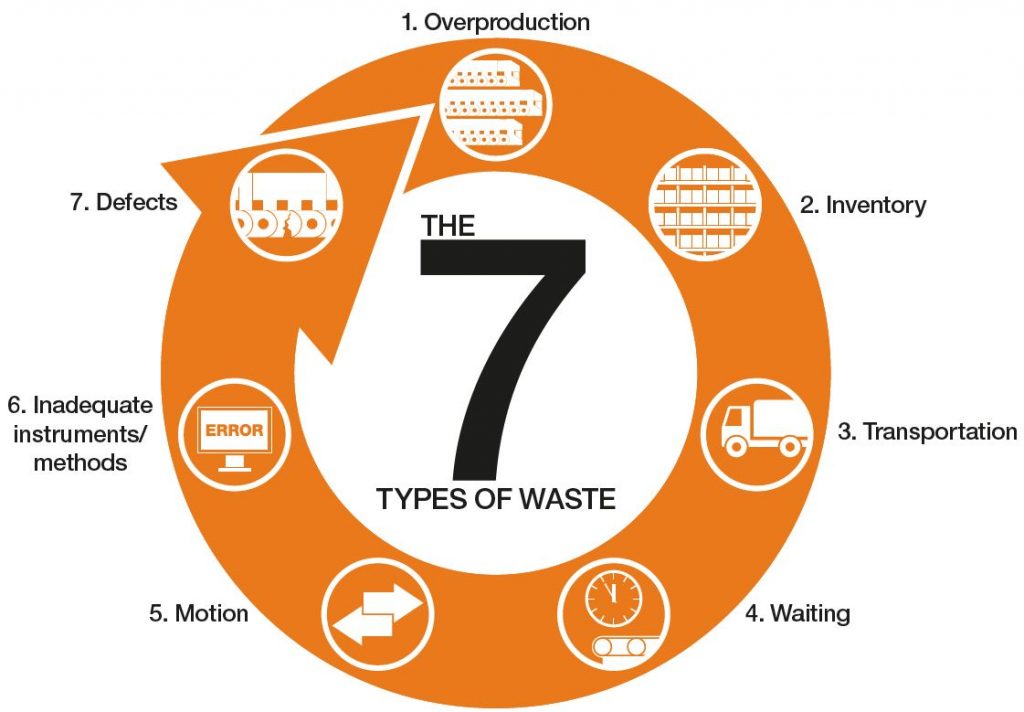What is Lean Management and how do you work lean?
Beke Nieszytka | 6. August 2019
Lean management is an approach to continuous process optimisation. It includes the efficient design of the entire value chain. Using various methods, procedures and principles of thought, it pursues the goal of harmonising processes and producing a holistic production system without waste (lean production).
Origin of Lean Management. Lean management has its origins in the automotive industry. In the 1930s, Toyota introduced the Toyota Production System (TPS) due to scarcity of raw materials, political isolation and austerity measures to reduce wastage.
The concept of lean management can be applied in different industries. The focus is on value-added activities for which the customer pays. In everyday work, however, actions that cannot contribute to the increase in value or even cause additional costs are performed. This is often the result of inefficient processes, which can lead to waiting times, unnecessary communication and complicated work steps. Therefore, the waste of resources and working time is treated specifically.
The 7 types of waste
To enable a streamlined way of working, any kind of waste should be identified in a company’s processes. The Lean Management Theory describes seven types of non-value-added activities:

However, a process without waste is hardly possible. Therefore, lean management focuses on reducing waste to a predefined and achievable optimum. In addition, five principles are used:
The 5 lean principles
Definition of the value from the customer’s point of view
The requirements and needs of the customer are the focus. The products should correspond to the customer’s ideas and be adapted exactly to his needs. Production planning is designed to achieve this goal.
Analysis of the value stream
During the analysis, the processes are broken down into subareas and analysed. Ultimately, all processes within the value chain must be aligned with the value stream.
Implementation of the flow principle
Assuming that this value stream runs as smoothly as possible without interruptions, waste can be avoided. For this purpose, the steps of a value stream are brought into a suitable order and adapted to one another.
This is done by asking whether they proceed simultaneously or in succession, how bottlenecks can be avoided.
Introduction of the pull principle
Frequently, companies produce with the goal of full capacity utilisation and “pushing” the products independently of the concrete demand through the individual production steps (= push principle).
By contrast, the pull principle produces according to specific needs. Ideally, no storage is required and there are no waiting times.
Continuous improvement
The constant pursuit of perfection is one of the central principles in lean management. With continuous improvement and the discovery of ever new possibilities for improvement, the goal is always to achieve an optimal state.

Working lean with readychain® and readycable®
igus® products support your company in a lean way of working. igus® offers 100% tested pre-assembled cables with connectors (readycable®) and energy chains (readychain®) completely assembled with cables and connectors.
1 Overproduction
Not a metre of cable too much: A solution tailored to your application
2 Inventory
Just in time: reducing your stock by 50%
3 Transportation
Only one way for a complete system, instead of many transport routes for many individual parts
4 Waiting
Shortening your throughput time by up to 95%
5 Motion
Single contact: Everything from one source – direct from the manufacturer
6 Inadequate instruments/methods
Elimination of assembly interruptions by ready-to-install systems
7 Defects
Reliable quality through 100% tested components
For further information about readychain® and readycable®, go to our website.

